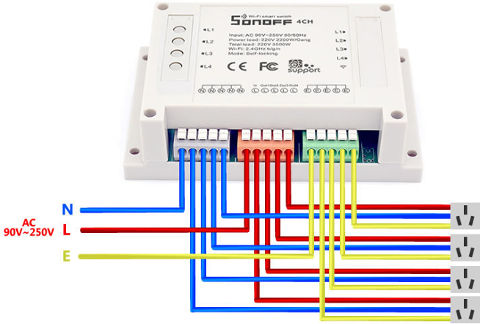Esp-now I/o Point To Point
Point I/O, especially if you require OE4's or OB2P's be comes a bit of a mess as you have to provide empty slots with CTM/s on either side of the module or there will be temperature issues. There is a tech note on this. Point I/O is also less density per module, adding to the overall costs, etc.
One of the important jobs of an Operating System is to manage various I/O devices including mouse, keyboards, touch pad, disk drives, display adapters, USB devices, Bit-mapped screen, LED, Analog-to-digital converter, On/off switch, network connections, audio I/O, printers etc.An I/O system is required to take an application I/O request and send it to the physical device, then take whatever response comes back from the device and send it to the application. I/O devices can be divided into two categories −.Block devices − A block device is one with which the driver communicates by sending entire blocks of data. For example, Hard disks, USB cameras, Disk-On-Key etc.Character devices − A character device is one with which the driver communicates by sending and receiving single characters (bytes, octets).
For example, serial ports, parallel ports, sounds cards etcDevice ControllersDevice drivers are software modules that can be plugged into an OS to handle a particular device. Operating System takes help from device drivers to handle all I/O devices.The Device Controller works like an interface between a device and a device driver. I/O units (Keyboard, mouse, printer, etc.) typically consist of a mechanical component and an electronic component where electronic component is called the device controller.There is always a device controller and a device driver for each device to communicate with the Operating Systems.
A device controller may be able to handle multiple devices. As an interface its main task is to convert serial bit stream to block of bytes, perform error correction as necessary.Any device connected to the computer is connected by a plug and socket, and the socket is connected to a device controller. Following is a model for connecting the CPU, memory, controllers, and I/O devices where CPU and device controllers all use a common bus for communication. Synchronous vs asynchronous I/O.Synchronous I/O − In this scheme CPU execution waits while I/O proceeds.Asynchronous I/O − I/O proceeds concurrently with CPU executionCommunication to I/O DevicesThe CPU must have a way to pass information to and from an I/O device. There are three approaches available to communicate with the CPU and Device. Special Instruction I/O. Memory-mapped I/O.

Direct memory access (DMA)Special Instruction I/OThis uses CPU instructions that are specifically made for controlling I/O devices. These instructions typically allow data to be sent to an I/O device or read from an I/O device. Memory-mapped I/OWhen using memory-mapped I/O, the same address space is shared by memory and I/O devices. The device is connected directly to certain main memory locations so that I/O device can transfer block of data to/from memory without going through CPU.While using memory mapped IO, OS allocates buffer in memory and informs I/O device to use that buffer to send data to the CPU.
I/O device operates asynchronously with CPU, interrupts CPU when finished.The advantage to this method is that every instruction which can access memory can be used to manipulate an I/O device. Memory mapped IO is used for most high-speed I/O devices like disks, communication interfaces. Direct Memory Access (DMA)Slow devices like keyboards will generate an interrupt to the main CPU after each byte is transferred. If a fast device such as a disk generated an interrupt for each byte, the operating system would spend most of its time handling these interrupts. So a typical computer uses direct memory access (DMA) hardware to reduce this overhead.Direct Memory Access (DMA) means CPU grants I/O module authority to read from or write to memory without involvement. DMA module itself controls exchange of data between main memory and the I/O device.

CPU is only involved at the beginning and end of the transfer and interrupted only after entire block has been transferred.Direct Memory Access needs a special hardware called DMA controller (DMAC) that manages the data transfers and arbitrates access to the system bus.
Esp-now I/o Point To Point Chart
Additional Information. Our integrates logic-solving capability into I/O, motor starters, push buttons, and other control components, delivering higher-performance and lower-cost distributed control. Protect your people, productivity and environment with our integrated. We understand your factory floor challenges and can help you meet your goals, using one of the broadest safety portfolios in the industry. Our provide the foundation to drive plantwide optimization efficiently and effectively, enabling you to respond competitively to the economy and changes in consumer demand.
Our PartnerNetwork™ offers complementary product solutions for and through the. You can sort and filter products from best-in-industry suppliers in your region to connect to the Rockwell Automation® architecture, or to use with our products.
Esp-now I/o Point To Point System
— Find out how smart sensors with IO-Link can enable smart machines for The Connected Enterprise. allows sensors connected to an IO-Link master module to provide detailed diagnostics and machine health status to improve uptime and increase productivity. Kotor 2 droid planet power cores.